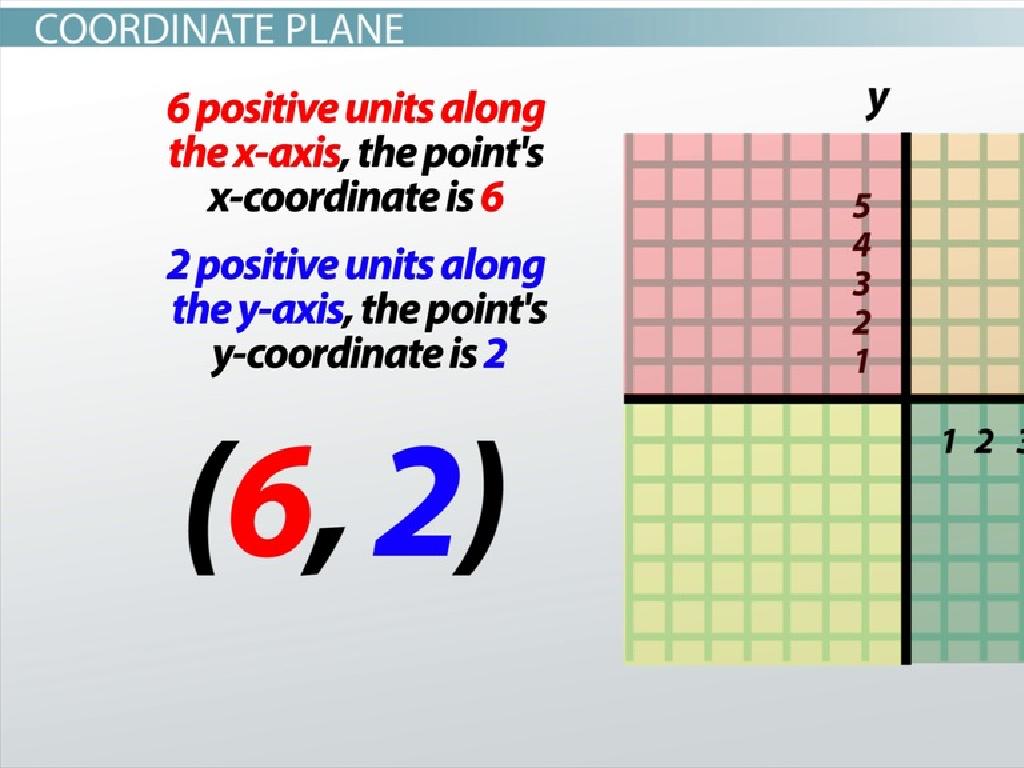Create Equations With No Solutions Or Infinitely Many Solutions
Subject: Math
Grade: Eighth grade
Topic: One-Variable Equations
Please LOG IN to download the presentation. Access is available to registered users only.
View More Content
Equations with Unique Solutions
– Recap one-variable equations
– Equations with one variable like x + 5 = 12
– Explore equation solutions
– Solutions are values that satisfy the equation
– No solution vs. infinite solutions
– No solution: no value for the variable works; infinite: many values fit
– Characteristics of unique solutions
– Equations with unique solutions have one answer, e.g., x = 7
|
Begin with a brief review of one-variable equations and how we find their solutions. Emphasize that solutions are specific values that make the equation true. Then, introduce the concept that some equations may have no solution or infinitely many solutions. Explain that an equation with no solution will never be true, no matter what value is substituted for the variable. Conversely, an equation with infinitely many solutions is true for all values of the variable. Highlight the difference between these special cases and equations with a unique solution, which have exactly one value that satisfies the equation. Provide examples to illustrate each case and prepare students for identifying these types of equations in practice.
Equations with One Solution
– Review standard one-solution equations
– Equations where one value for the variable makes it true
– Example: Solve 2x + 3 = 7
– Subtract 3 from both sides, then divide by 2 to find x
– Discuss solving for the single solution
– Isolate variable x to find it equals 2, the single solution
|
Begin with a review of what constitutes a standard equation that has one solution, emphasizing that there is only one value for the variable that will make the equation true. Use the example 2x + 3 = 7 to illustrate the process. Walk through the steps of solving the equation: subtracting 3 from both sides to get 2x = 4, and then dividing both sides by 2 to find that x = 2. Highlight that this is the only solution that satisfies the equation. This will set the stage for understanding equations with no solutions or infinitely many solutions by contrasting them with the one-solution case.
Equations with No Solutions
– Characteristics of no-solution equations
– An equation has no solution if it simplifies to a false statement, like 0 = 5.
– Example: 3x + 4 = 3x + 9
– After simplifying, we get 4 = 9, which is never true, hence no solution exists.
– Explanation of unsolvable equations
– These equations are unsolvable because they imply a contradiction.
|
This slide introduces the concept of equations that have no solutions. Start by explaining that an equation with no solution is one that, after simplifying, results in a statement that is always false. Use the example 3x + 4 = 3x + 9 to illustrate this point. Show the steps of simplifying the equation by subtracting 3x from both sides, leading to 4 = 9, which is clearly false. Emphasize that such equations are unsolvable because they represent a contradiction; they claim something that cannot be true under any circumstances. Encourage students to think critically about what they are solving and to recognize the signs of no-solution equations.
Equations with Infinitely Many Solutions
– Characteristics of such equations
– Both sides simplify to the same expression
– Example: 4(x – 2) = 4x – 8
– Simplify both sides to see they are the same
– Identical equation sides
– This indicates every number is a solution
|
This slide introduces students to the concept of equations that have infinitely many solutions. These are special cases in algebra where, after simplification, both sides of the equation are identical, indicating that any value for the variable would satisfy the equation. For example, when we distribute the 4 in 4(x – 2), we get 4x – 8, which is the same as the other side of the equation. This means that the original equation holds true for all values of x. It’s crucial to explain that this type of equation is an identity – true for all values of the variable. Encourage students to practice with different equations to identify those with infinitely many solutions. Provide additional examples for them to solve and verify.
Equations with No or Infinite Solutions
– Identifying special equations
– Categorize practice problems
– Sort equations into ‘no solutions’, ‘infinite solutions’, or ‘one solution’
– Characteristics of no solution
– No solution when two lines are parallel and never intersect
– Characteristics of infinite solutions
– Infinite solutions when two lines are coincident, overlapping each other
|
This slide introduces students to the concept of equations that have no solutions or infinitely many solutions. Begin by explaining that most linear equations have one solution, but under certain conditions, they may have no solution or infinite solutions. For practice, provide students with a set of equations to categorize based on these criteria. Emphasize that equations with no solutions occur when the lines represented by the equations are parallel and do not intersect. Equations with infinitely many solutions represent the same line (coincident lines) and thus overlap completely. Encourage students to remember these characteristics by visualizing the graph of the equations. The activity will help solidify their understanding through practical application.
Class Activity: Equation Challenge
– Pair up and solve equations
– Determine the solution type
– Does the equation have one, none, or infinite solutions?
– Share and explain your findings
– Discuss how you decided on the solution type
– Reflect on the activity
|
This activity is designed to encourage collaborative problem-solving and critical thinking as students work in pairs to solve a set of equations. Provide each pair with a worksheet containing various one-variable equations. They must identify whether each equation has one solution, no solution, or infinitely many solutions. After solving, students will share their findings with the class, explaining the reasoning behind their conclusions. This will help them articulate their thought process and reinforce their understanding. As a teacher, circulate the room to offer guidance and ensure that each pair is on the right track. Possible activities for different pairs could include solving for different sets of equations, creating their own equations to challenge other pairs, or presenting a mini-lesson on the types of solutions to the class.
Wrapping Up: No Solution or Infinite Solutions
– Summarize key points of equations
– Homework: Solve the worksheet
– Complete the provided worksheet on equations
– Categorize equations by solution type
– Determine which equations have no solution or infinitely many solutions
– Bring questions for next class
– Think about any difficulties faced while solving
|
As we conclude today’s lesson, remind students of the main concepts covered: creating equations with no solutions or infinitely many solutions. For homework, students are to complete a worksheet that requires them to solve and categorize equations based on their solution type. This will reinforce their understanding and allow them to apply what they’ve learned. Encourage students to come prepared with questions for the next class, fostering a curious and engaged learning environment. The homework will also serve as a formative assessment to gauge student comprehension of the topic.






